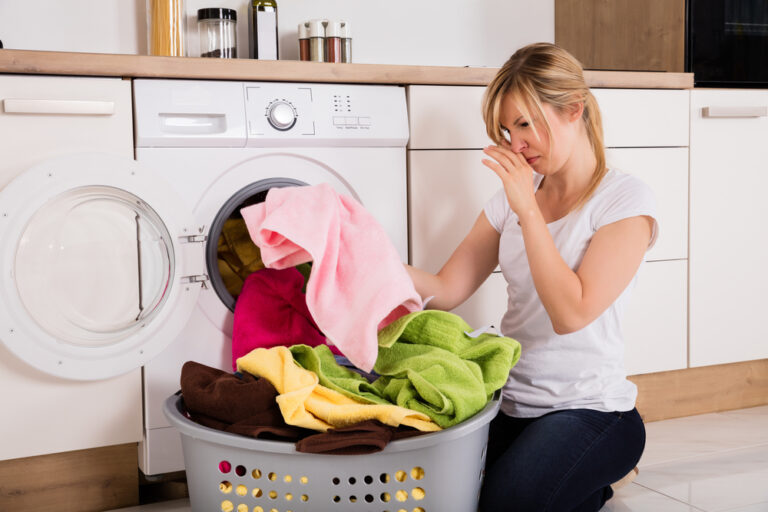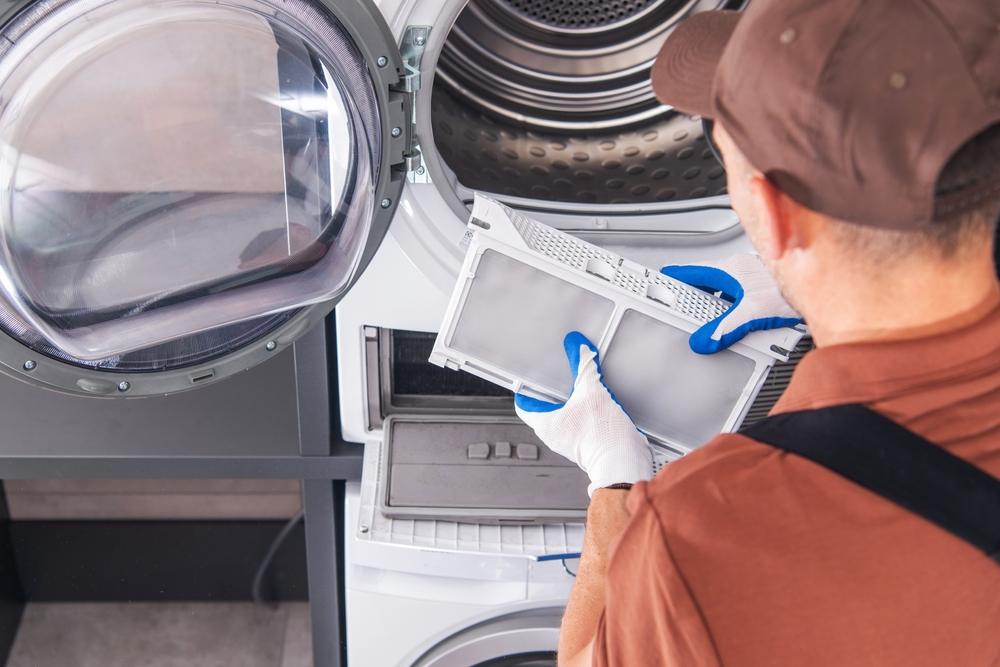
Is Repairing Your Washing Machine Worth It? How to Decide Between Fixing and Replacing
Homeowners in Milwaukee see it every year: the washer quits spinning on laundry day, right before a snowstorm or a summer weekend at the lake. The big question follows fast. Is repair worth it, or is it time to replace? The right choice depends on age, symptoms, repair cost, and how the machine fits your household. This guide uses real service patterns from Milwaukee neighborhoods and common washer models to help make a clear decision. It also explains how a local expert can protect the budget and keep laundry moving.
What usually fails first
Most washers fail in predictable ways. On top-loaders, lid switches, inlet valves, drive belts, and agitator dogs wear down with normal use. On front-loaders, door locks, drain pumps, shock absorbers, and sometimes spider arms cause trouble. Electronically, control boards can fail after power surges or moisture exposure, which is common in humid basements in neighborhoods like Bay View and Riverwest.
Simple parts tend to be affordable and quick to install. A lid switch or drain pump can often be replaced the same day. High-ticket parts such as control boards or bearings take more thought because their price can approach the machine’s remaining value.
The 50 percent rule, with Milwaukee context
A repair is usually worth it if the total cost is less than half the price of a comparable new washer and the unit is younger than nine to ten years. In Milwaukee, a solid mid-range replacement washer runs about $700 to $1,200 before tax and delivery. If the estimate comes to $150 to $300 for a five-year-old machine that otherwise cleans well, repair is the sensible move. If the estimate lands near $500 for an eleven-year-old unit with rust and recurring drain errors, replacement usually wins.
Age matters because modern washers last about 10 to 14 years with normal use. Families running four to six loads per week will be closer to the lower end. Households doing one to two loads can see more life.
Energy, water, and the real cost of keeping an older washer
Milwaukee water rates and energy costs make efficiency relevant. Older top-load washers can use 30 to 40 gallons per cycle. Newer high-efficiency units might use 12 to 20 gallons. Over a year, that difference adds up. If an older machine needs a $400 repair and also costs an extra $60 to $100 per year in water and energy, an upgrade can pay back in three to five years. For a newer washer under eight years old, the efficiency gap is smaller, so repair tends to make more financial sense.
Common scenarios seen on service calls
A five-year-old front-load Whirlpool in Wauwatosa shows an E01/F09 drain error. The drain pump is jammed by a bobby pin. The fix runs under $250. Repair is worth it. The machine is otherwise in good shape, and the part is readily available.
A ten-year-old Samsung top-loader in West Allis shakes during spin and has a cracked tub ring. With suspension issues and a noisy bearing, the estimate climbs past $500. The owner runs large family loads five days a week. Replacement is the better move due to age, workload, and part costs.
A seven-year-old LG in Bay View stops mid-cycle. Diagnosis points to a failed door lock and frayed harness. The total comes in around $300. Given the age and part availability, repair keeps the washer useful for several more years.
Signs a repair is the smarter choice
- The washer is under eight years old and has had minimal problems.
- The issue involves a wear part: belts, pumps, valves, lid switches, door locks, or simple sensors.
- The quote is under half of a similar new unit.
- The tub and basket are solid with no heavy rust, and the machine still cleans well.
Signs it is time to replace
- The washer is nine to fourteen years old and shows multiple symptoms: loud spin, leaks, error codes, and unbalanced loads.
- Major components fail: bearings, spider arm, outer tub, or control board on an older unit.
- Parts are discontinued or backordered, which is common with older imports.
- The household needs larger capacity or quieter operation for stacked setups in condos on the East Side or Third Ward.
Brand and parts availability in Milwaukee
Parts supply matters. Whirlpool, Maytag, and Amana have strong parts availability in the Milwaukee area. LG and Samsung parts are accessible but sometimes carry longer lead times for best washer repair near me older models. European brands can be a mixed bag for parts and pricing. A local technician who works daily with Milwaukee distributors can give a realistic timeline before the homeowner commits.
The role of installation and venting
While washers do not vent like dryers, installation still affects performance. Old rubber hoses can burst, especially in older homes in Sherman Park or Washington Heights. Stainless braided hoses cost little and reduce risk. Uneven floors in basements can cause vibration and false unbalance errors. A proper leveling and a vibration pad can rescue a machine that otherwise seems “done.” These are quick fixes compared to replacement.
DIY vs professional service
DIY cleanup of the drain filter, checking for coins in the pump access, and verifying that supply valves are open can solve simple no-drain or no-fill symptoms. Beyond that, modern machines often need diagnostic modes, error history, and voltage checks. Guessing at board or sensor replacements can get expensive fast. A structured diagnosis minimizes part swaps and reduces repeat failures.
Here is a short at-home check before calling for Milwaukee washing machine repair:

- Confirm the outlet has power and the breaker is not tripped.
- Clean the drain filter or coin trap and inspect the hose for kinks.
- Check the lid or door latch for debris; close the door firmly and retry.
- Verify hot and cold valves are open and screens are not clogged.
- Level the unit and run a rinse and spin without laundry to test vibration.
If these steps do not resolve the issue, schedule a diagnostic visit. A clear fault code and symptom history help the technician move faster.
Typical repair price ranges
Pricing varies by brand and model, but common Milwaukee repairs usually fall into these ranges, parts and labor included: a lid switch $120 to $220, a drain pump $180 to $350, a water inlet valve $150 to $280, a door lock $180 to $320, and a drive belt $140 to $220. Control boards range widely, often $250 to $500. Bearing or tub jobs can exceed $600 and are usually replacement territory on older machines. These ranges help frame the 50 percent rule without guesswork.
Protecting the next five years
Good habits extend washer life. Using the correct detergent dose reduces residue, which cuts odor and strain on the drain system. Leaving the door or lid cracked after use helps dry the tub. Monthly maintenance cycles with a washer cleaner can prevent build-up. For front-loaders, replacing door boots when they tear prevents leaks and mold. Catch small issues early; a $200 repair today can prevent a $600 repair later.
How a local pro makes the decision easier
A trusted Milwaukee technician brings three advantages. First, accurate diagnosis on the first visit, which avoids stacking parts costs. Second, honest replacement advice when the math no longer works. Third, fast access to local parts distributors, which shortens downtime. Households in Shorewood, Oak Creek, Glendale, and Franklin benefit from a nearby team that can arrive with common parts on the truck.
Unique Repair Services, Inc. focuses on clear estimates and practical recommendations. The team sees hundreds of washers across Milwaukee County every season. That volume gives pattern recognition: which LG locks fail most, which Whirlpool pumps clog with pet hair, and which Samsung models warrant replacement after bearing noise.
A quick decision framework
Think through four questions. How old is the washer? What is the total repair cost compared to a similar new unit? Does the machine still meet capacity and noise expectations for the home? Are parts readily available within a few days? If the answers lean young, affordable, suitable, and available, repair is worth it. If age is high and parts are costly or rare, replacement protects the budget.
Ready for help in Milwaukee?
If the washer is acting up in Whitefish Bay, West Allis, or Bay View, a brief diagnostic visit can settle the fix-or-replace debate with real numbers. For reliable Milwaukee washing machine repair, schedule service with Unique Repair Services, Inc. The team will diagnose, quote, and either fix the unit or guide the homeowner to a smarter replacement. Book online or call to get on the schedule, often as soon as the next business day.


Unique Repair Services, Inc. provides washer repair in Milwaukee, WI. Our local technicians service all washer types and brands, fixing leaks, drainage problems, spin issues, and electrical faults. We help Milwaukee homeowners get their laundry back on track quickly using trusted repair methods and quality parts. From front-load to top-load models, we restore washers to reliable working condition. We focus on clear communication, dependable service, and fair pricing for every job in the Greater Milwaukee Area. Unique Repair Services, Inc.
Milwaukee,
WI,
USA
Phone: (847) 231-2812 Website: https://uniquerepair.com/service-areas/milwaukee-wi Social Media:
Facebook,
LinkedIn
Find Us on Map: Google Maps